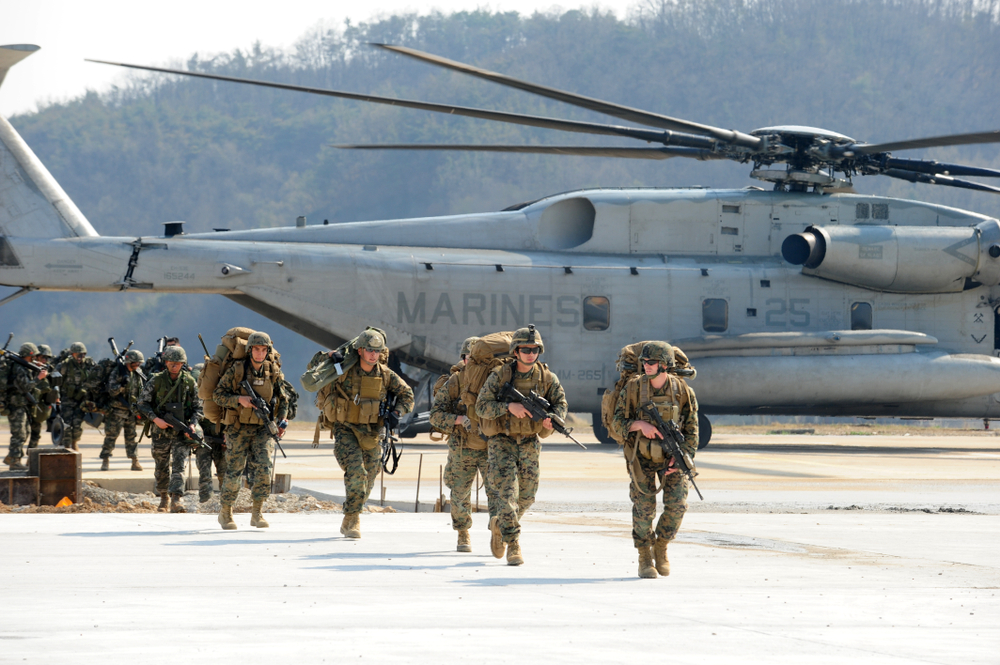Although Iran is currently preoccupied with the Vienna negotiations and trying to remove the IRGC from the Terrorist Lists of the US State Department, it has turned its focus once more to the US presence in the region, especially in Iraq and Syria. It can be argued that Iran has many objectives in adopting this approach, including adding pressure on the US administration to conclude the nuclear deal, resisting the attempt to link removing the IRGC from the terrorist list to reduced Iranian activities in the region, affirming continued Iranian presence in Syria, as well as striving for a US withdrawal from the Middle East, as it did from Afghanistan.
There are various manifestations of Iran’s current focus on US presence in the region, including the attack on the “Ain El Assad” military base, where US soldiers are stationed, with drones. Significantly, the Imam of the Friday prayers in Tehran, Kazem Sedky, stated during his sermon on April 8th, that the Vienna negotiations and the US presence in the region are separate issues, and that such attacks would continue as long as the US maintained a presence in the region.
Sedky’s statements are significant for two reasons, the first of which is that they reflect to a great degree the views of the Supreme Leader Ali Khamenei. He personally oversees the assignment of Friday preachers, and therefore chooses clerics that adopt his views on domestic and international issues. Secondly, it reflects the Iranian policy of speaking through more than one mouthpiece, ie, not only relying on official statements in sending messages to regional and world powers, but also allowing a space for “unofficial” statements, that convey the same messages.
Iran’s renewed focus on US military presence in the region can be explained by a number of factors, including:
Hoping for a repeat of the US withdrawal from Afghanistan: While Iran still has concerns regarding the consequences of US withdrawal from Afghanistan, which allowed the Taliban to assume control, it also sees there are lessons to be gained from this experience. Most importantly, Iran perceives that a similar scenario could be applied in Iraq, that is, US withdrawal could allow Iran-affiliated militias the opportunity to move in and fill the vacuum a complete US withdrawal would create. Although there are various differences between Iraq and Afghanistan, most notably the more advanced level of training of Iraq’s security and military forces, Iran still feels these militias have the capacity to pursue this objective in a manner that would enhance Iran’s influence in Iraq. It is noteworthy that Iran’s influence in Iraq is currently facing significant challenges, as reflected in its inability to resolve the crisis of forming a new Iraqi government based on the results of last October’s parliamentary elections.
Affirming Iran’s presence in Syria: Iran sees a link between the pressures it is experiencing to reduce its footprint in the region, under the label of de-escalation, and the repercussions of the war in Ukraine. With Russia preoccupied in Ukraine, there is a general perception that it’s role and influence in Syria is likely to diminish. Many in Tehran think this is likely give more momentum to calls for ending for the removal of all foreign troops from Syria, especially Russian and Iranian forces. Iran is therefore keen to affirm that it will not reduce its presence in either Syria or Iraq, especially as there are other foreign forces present in both countries. Iran moreover argues that its presence in Syria is legitimate, based on an invitation from the government, whereas other forces, particularly US forces, have no such justification.
Furthering the nuclear agreement: Iran is wary that negotiations in Vienna may well fail, especially considering the hesitance of the Biden Administration to remove the IRGC from the terrorist list, due to domestic and external pressures. Iran, through the above mentioned attacks and public statements, is therefore seeking to increase pressure on the US to conclude the nuclear deal and to lift a significant part of the sanctions on Iran, especially on its oil exports, allowing it to be reintegrated into the global economy.
Responding to hostile US Statements: Iran is using these statements to respond to US official warnings that continued attacks on US forces in the region could lead to the collapse of the negotiation in Vienna. It is important to note that in his statement, Kazem Sedky pointed out that such attacks started before the Vienna negotiations, and that they increased following the US withdrew from the 2015 nuclear agreement under President Trump, and the reinstatement of sanctions on Iran. Iran is therefore implying that the attacks were a response to the policies of the Trump administration. Moreover, these statements could also be in response to statements by the Head of the Joint Chiefs of Staff, General Mark Miley, before Congress on April 7th, in which he expressed his opinion that the IRGC is a terrorist organization and should not be removed from the terrorist list. In other words, anticipating the possible failure of negotiations, Iran seeks to point out that this would have negative consequences on US interests in the region, especially mounting attacks on US forces in Syria and Iraq.
In conclusion, it can therefore be argued that the region is likely to witness increased tensions in the near future, as disagreement between the US and Iran has now become extended to Iran’s regional meddling. While the conclusions of the Vienna negotiations remain an open ended question, other regional powers may also contribute to this regional escalation, in particular Israel, which is closely monitoring developments.


